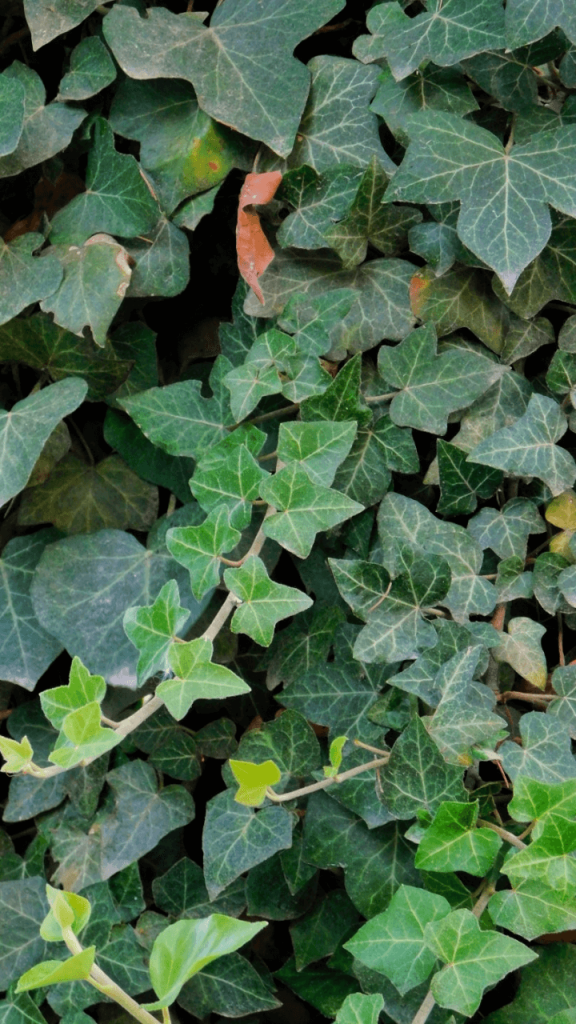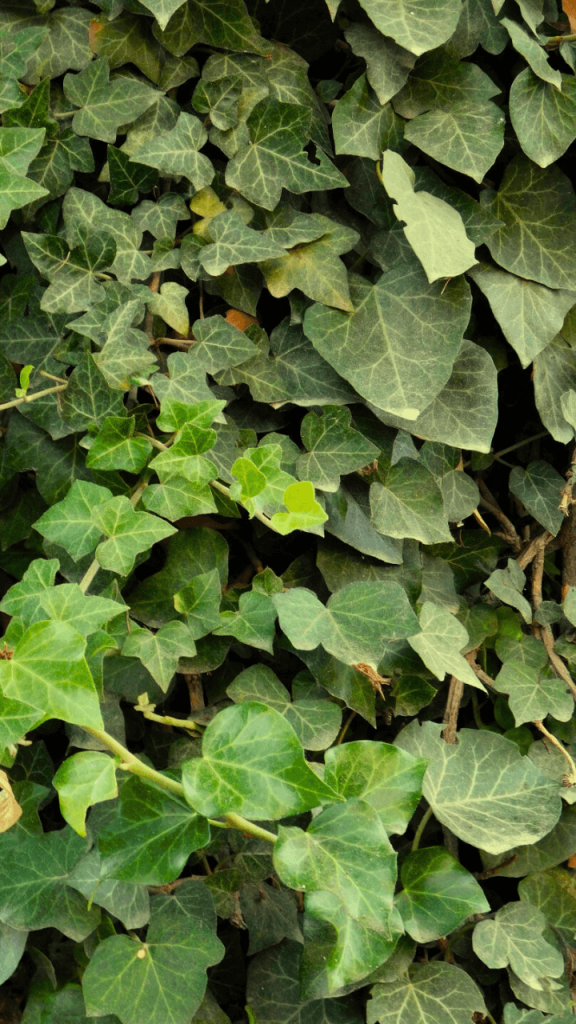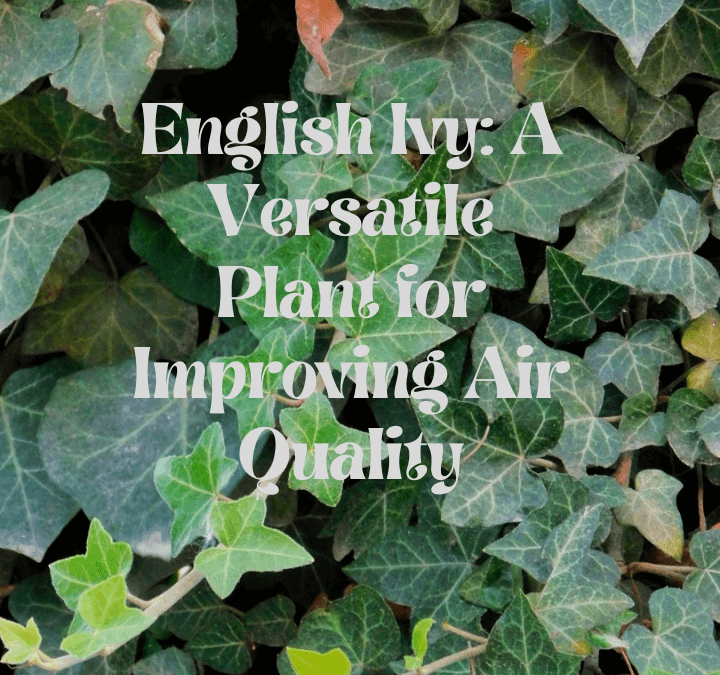Air pollution is a global concern that poses significant risks to human health and the environment. The World Health Organization estimates that air pollution leads to around seven million premature deaths annually. Pollutants like particulate matter, nitrogen dioxide, sulfur dioxide, and ozone can have severe implications for respiratory and cardiovascular systems, among other health issues.
Improving indoor air quality is crucial to combat this issue. Surprisingly, indoor air can be even more polluted than outdoor air due to various sources such as cleaning products, cooking, and furniture emissions. However, research has demonstrated that plants play a pivotal role in enhancing indoor air quality by effectively removing harmful pollutants and increasing oxygen levels. This is where English Ivy (Hedera helix) comes into play.
English Ivy, known for its versatility and aesthetic appeal, has been utilized for centuries due to its medicinal properties. More recently, it has garnered attention for its exceptional air-purifying abilities, making it a valuable addition to any indoor environment. In this blog post, we will delve into the benefits of English Ivy as an air-purifying plant, along with valuable insights on its care and maintenance.
What is English Ivy?
Hedera helix is an evergreen climbing vine that originates from Europe, Western Asia, and North Africa. This remarkable plant has been cultivated for centuries as an ornamental species and is renowned for its capacity to gracefully ascend walls, fences, and other structures using its small aerial roots that develop along the stem. Its distinctively lobed, glossy green leaves can grow up to 10cm in length, while in the fall, it produces small greenish-yellow flowers that eventually give way to black or dark blue berries.
Beyond its decorative qualities, English Ivy boasts a rich history of medicinal applications. In traditional European medicine, it has been employed to treat respiratory ailments like asthma and bronchitis, as well as various skin conditions, headaches, and rheumatism. The plant contains saponins, flavonoids, and other compounds believed to possess anti-inflammatory and antioxidant properties.
Moreover, in recent years, English Ivy has garnered attention for its remarkable capacity to enhance indoor air quality. Research has substantiated its effectiveness in removing volatile organic compounds (VOCs) such as formaldehyde, benzene, and toluene from the air. Consequently, English Ivy serves as an exceptional choice for indoor environments, including homes and offices, where these compounds may be present in cleaning products, furniture, and various household items.
How does English Ivy improve air quality?

English Ivy (Hedera helix) has been extensively studied and proven to be an exceptional air-purifying plant, effectively eliminating harmful pollutants from the air. One of its primary mechanisms of action lies in its capacity to absorb volatile organic compounds (VOCs), including formaldehyde, benzene, and toluene, through its leaves. These compounds commonly originate from cleaning products, paints, adhesives, and various household items, and their presence in high concentrations can have detrimental health effects.
In addition to VOC absorption, English Ivy possesses the remarkable ability to filter airborne particles, such as mold spores and other allergens, thereby improving indoor air quality. This feature is especially beneficial for individuals who suffer from respiratory conditions like asthma or allergies.
Numerous scientific studies have substantiated the air-purifying properties of English Ivy. NASA’s research identified it as one of the most efficient plants at removing formaldehyde from the air, while the University of Georgia’s study demonstrated its effectiveness in reducing airborne mold levels within simulated indoor environments.
In comparison to other popular houseplants, English Ivy demonstrates particular proficiency in eliminating formaldehyde, a prevalent pollutant in indoor settings. Although other plants like peace lilies and spider plants also excel at purifying the air, English Ivy stands out due to its capacity to target multiple types of pollutants.
Overall, English Ivy emerges as an exceptional choice for those seeking to enhance indoor air quality and foster a healthier living or working environment. By incorporating English Ivy into your space, you can take proactive steps towards creating cleaner, fresher air and promoting well-being.
Benefits of having English Ivy in the home or workplace
Improved air quality: As discussed in section III, English Ivy has been scientifically proven to effectively remove harmful pollutants and airborne particles from the air, establishing itself as an outstanding natural air purifier. This attribute is of paramount importance as it contributes to breathing cleaner air, which can significantly benefit our health by reducing the risk of respiratory and cardiovascular diseases.
Enhanced aesthetic appeal: English Ivy, with its glossy, green leaves, possesses a captivating beauty that can infuse any indoor space with a touch of nature and tranquility. Its versatility allows it to be grown in various ways, whether in elegant hanging baskets, as a graceful wall climber, or as a charming tabletop plant, thereby making it an adaptable addition that complements any décor.
Potential stress-reducing effects: Scientific studies have indicated that the presence of plants in the environment can help alleviate stress and foster a sense of well-being. English Ivy’s capacity to improve air quality and enhance the visual appeal of a space further bolsters its potential in reducing stress and creating a calming atmosphere.
Low maintenance: English Ivy proves to be a relatively undemanding plant, capable of thriving in diverse indoor environments. While it prefers bright, indirect light and moist soil, it exhibits adaptability and can tolerate lower light levels and occasional periods of drought. With proper care, English Ivy can endure for many years, consistently enhancing indoor air quality.
Overall, incorporating English Ivy into your home or workplace offers numerous benefits for both physical and mental well-being. By purifying indoor air, adding a touch of natural beauty, and potentially reducing stress levels, English Ivy emerges as a versatile and invaluable addition to any indoor environment. With its enduring nature and the positive impact it brings, English Ivy embodies the essence of a true arboreal companion.
How to care for English Ivy

Light: English Ivy, as an arborist would tell you, thrives in bright, indirect light. However, it is adaptable and can tolerate lower light levels, making it suitable for various indoor settings. It is important to avoid exposing the plant to direct sunlight, as this can scorch its delicate leaves.
Water: When watering English Ivy, striking the right balance is key. It prefers moist soil, but overwatering should be avoided. Allowing the soil to dry out between waterings slightly helps prevent issues such as root rot. Ensure thorough soil saturation when watering, allowing any excess water to drain out completely.
Humidity: English Ivy thrives in high-humidity environments, which can be challenging to replicate indoors. Misting the leaves occasionally can provide some level of humidity. Additionally, placing a tray of water near the plant helps increase humidity levels around it, creating a more favorable growing condition.
Temperature: Providing suitable temperature conditions is important for the optimal growth of English Ivy. It prefers cooler temperatures ranging from 50-70°F (10-21°C). It is advisable to avoid placing the plant near drafts or areas with extreme temperature fluctuations, as this can adversely affect its health.
Fertilizer: English Ivy benefits from regular fertilization during its active growth period, typically in spring and summer to promote healthy growth. Using a balanced, water-soluble fertilizer once every 2-3 weeks provides the necessary nutrients for its vitality. It is essential to follow the instructions on the fertilizer packaging and avoid overfertilization, which can lead to fertilizer burn.
Pruning: Regular pruning is crucial for maintaining English Ivy’s attractive appearance and compact growth. Removing excessively long stems or branches helps control its size and shape. Pinching back the tips of new growth encourages the plant to develop bushier foliage, resulting in a fuller and more vibrant display.
Conclusion
Its versatility and ability to enhance both aesthetics and air quality make it a valuable addition to any space. Scientific research has demonstrated its effectiveness in removing harmful air pollutants, thereby reducing the risk of respiratory and cardiovascular diseases.
English Ivy is not only beneficial but also easy to care for, making it accessible to a wide range of plant enthusiasts. Its adaptability allows it to thrive in various indoor spaces such as living rooms, bedrooms, and offices. By following the straightforward care tips provided in this article, anyone can enjoy the captivating beauty and air-purifying qualities of this remarkable plant.
Moreover, English Ivy offers a natural and cost-effective solution for improving indoor air quality, particularly in areas with high levels of air pollution. By reducing the presence of toxins in the air, this plant contributes to creating a healthier and more enjoyable indoor environment.
This is a plant that brings multiple advantages to our health and the environment. It is a splendid choice for individuals seeking to enhance the air quality and visual appeal of their indoor spaces. By incorporating English Ivy into our indoor environments, we can experience the remarkable benefits it offers and create a healthier and more vibrant living or working space.

